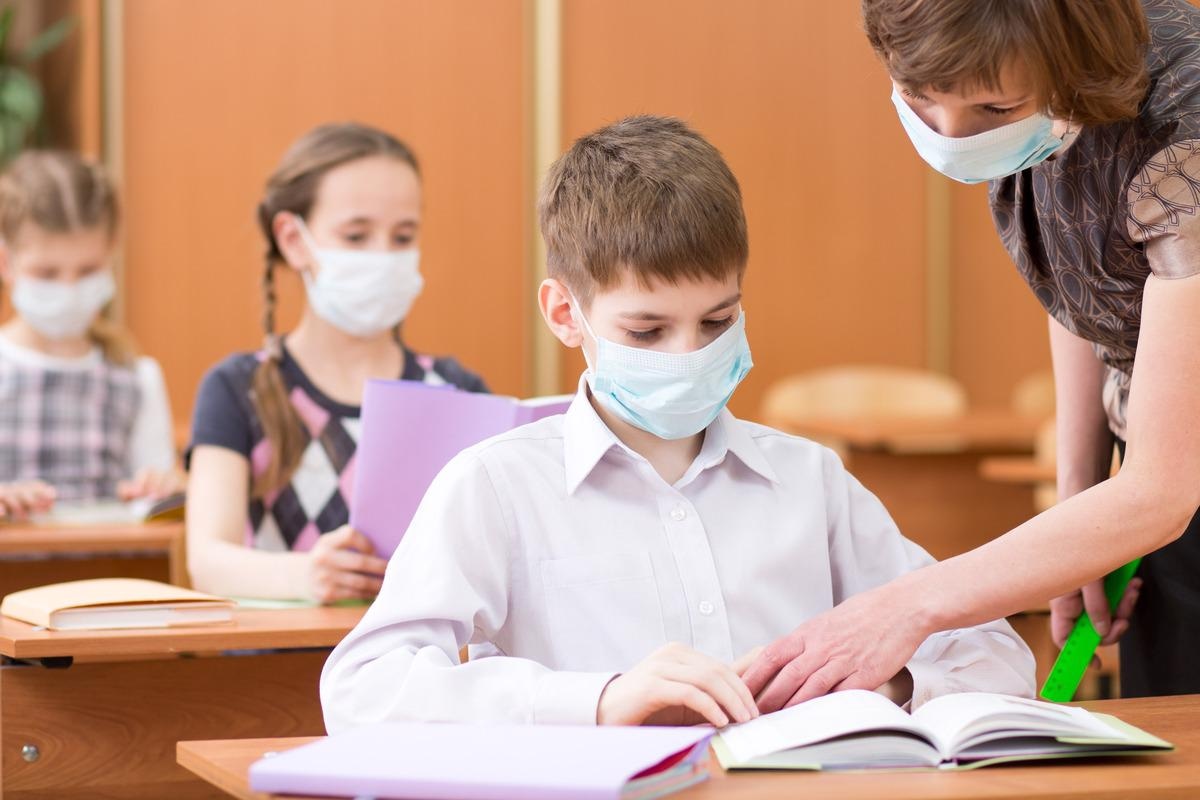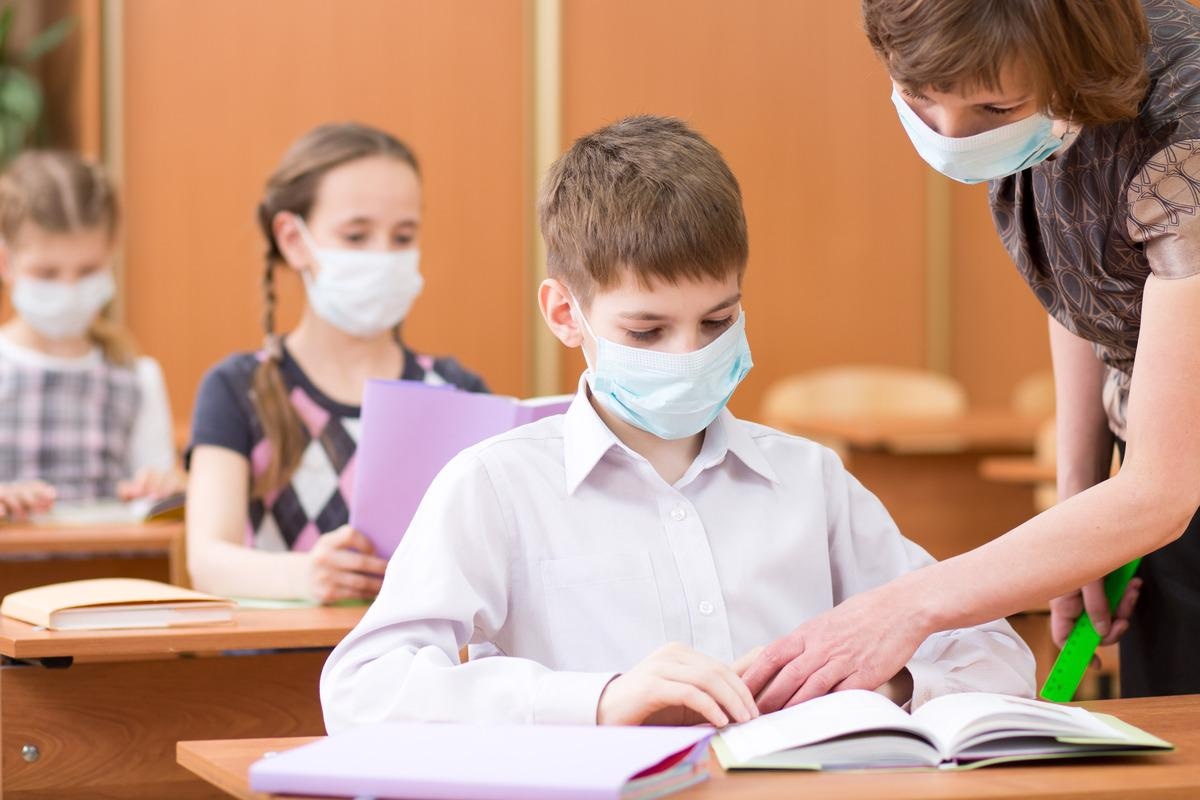
In a recent study posted to the medRxiv* preprint server, researchers evaluated whether severe acute respiratory syndrome coronavirus 2 (SARS-CoV-2) transmission among school-aged children in the Netherlands follows a bipartite school and household network.
 Study: Empirical evidence of transmission over a school-household network for SARS-CoV-2; exploration of transmission pairs stratified by primary and secondary school. Image Credit: Oksana Kuzmina/Shutterstock
Study: Empirical evidence of transmission over a school-household network for SARS-CoV-2; exploration of transmission pairs stratified by primary and secondary school. Image Credit: Oksana Kuzmina/Shutterstock
Children play a significant part in several infectious diseases transmission and are the recipients of most vaccines. In-depth knowledge of interactions between children based on gender, age, social group, vaccination status, and location and determining the transmissions associated with these interactions is essential in developing and implementing interventions to curb the transmission or identifying the risk for an outbreak when the vaccination rates drop. This understanding should be made available at the local level since the implementation of interventions or vaccination rollout programs is generally organized by the local authorities.
Further, contact surveys demonstrated that most close social encounters of children occur at home or school. Altogether, during the ongoing coronavirus disease 2019 (COVID-19) pandemic, with the lower vaccination rates of children, it is of prime importance to determine the SARS-CoV-2 transmission pattern among children in the home and school settings.
About the study
In the present study, the scientists analyzed COVID-19 transmission pairs in students aged between four and 17 years stratified by study year and primary and secondary schools to establish SARS-CoV-2 transmission through a school-household network. The COVID-19 cases with symptom onset from March 1 to April 4, 2021, identified through contact and source tracing in the Netherlands, were included in the study.
During the study period, primary schools were open full time and held in-class education whereas, secondary school students had in-class learning at least once a week in the Netherlands. Within SARS-CoV-2 transmission pairs, the spatial distance between postal codes was estimated as the Euclidean distance.
Study findings
The results indicate that of the 4,059 COVID-19 transmission pairs of school-going children identified, 51.9%, 19.6%, and 28.5% were between primary schoolers, primary and secondary schoolers, and secondary schoolers, respectively.
Symptom onset was known for 84.7% and 67% of the infectors and infectees, respectively. The full six-digit postcode was available for 99.7% of the pairs of school-aged children with SARS-CoV-2 infection, and 99.5% of the infectees reported the possible setting of acquiring infection.
Over 68% of SARS-CoV-2 transmission among children in the same study year happened at school, and most occurred in the oldest children of primary and secondary schools. By contrast, 81.7% and 64.3% transmission among primary-secondary schoolers and children from different study years, respectively, occurred in the home.
Students from higher classes in primary and secondary schools were more frequent infectors than infectees relative to students from lower classes. Further, older children of primary schools were more often infectors of secondary students than vice versa.
The average spatial distance between the SARS-CoV-2 infections among children sharing the same postcode was 1.2 km for primary students, 1.6 km for primary-secondary schoolers, and 4.1 km for secondary school pairs. The average distance of SARS-CoV-2 cases between children with different postcodes was 1.9 km and 6.1 km for primary and secondary school pairs, respectively.
Nearly 0.3% of identified SARS-CoV-2 transmission chains with three children demonstrated transmission among primary and secondary school-aged children. Children more commonly get SARS-CoV-2 infected at school then infect a third individual at home than the other way around. Most of the SARS-CoV-2 transmission chains were associated with primary school-going children than secondary children during the study period.
Conclusions
The study findings demonstrate that SARS-CoV-2 transmission among the primary and secondary school-aged children in the Netherlands pursues a bipartite network between schools and households during the COVID-19 pandemic.
The study indicates that while schools play a significant role in SARS-CoV-2 transmission among children from the same study years, households play a crucial part in SARS-CoV-2 transmission in children between study years and primary and secondary schools. The lower spatial distance between infections in transmission pairs from primary schools indicates the smaller school catchment area of the same. Most of the patterns observed in the current study are generalizable to the non-pandemic period and other respiratory pathogens such as influenza.
Overall, the study provides proof of COVID-19 transmission on a bipartite school-household network. Further, it highlights the significance of vaccinating children to curtail the ongoing SARS-CoV-2 pandemic and understanding interventions implemented by primary and secondary schools to mitigate COVID-19 and age-specific infectiousness and susceptibility of SARS-CoV-2.
*Important notice
medRxiv publishes preliminary scientific reports that are not peer-reviewed and, therefore, should not be regarded as conclusive, guide clinical practice/health-related behavior, or treated as established information.
-
van Iersel, S. et al. (2022) "Empirical evidence of transmission over a school-household network for SARS-CoV-2; exploration of transmission pairs stratified by primary and secondary school.". medRxiv. doi: 10.1101/2022.02.12.22270851. https://www.medrxiv.org/content/10.1101/2022.02.12.22270851v1
Posted in: Medical Science News | Medical Research News | Disease/Infection News
Tags: Children, Coronavirus, Coronavirus Disease COVID-19, covid-19, Education, Infectious Diseases, Influenza, Pandemic, Respiratory, SARS, SARS-CoV-2, Severe Acute Respiratory, Severe Acute Respiratory Syndrome, students, Syndrome

Written by
Shanet Susan Alex
Shanet Susan Alex, a medical writer, based in Kerala, India, is a Doctor of Pharmacy graduate from Kerala University of Health Sciences. Her academic background is in clinical pharmacy and research, and she is passionate about medical writing. Shanet has published papers in the International Journal of Medical Science and Current Research (IJMSCR), the International Journal of Pharmacy (IJP), and the International Journal of Medical Science and Applied Research (IJMSAR). Apart from work, she enjoys listening to music and watching movies.
Source: Read Full Article